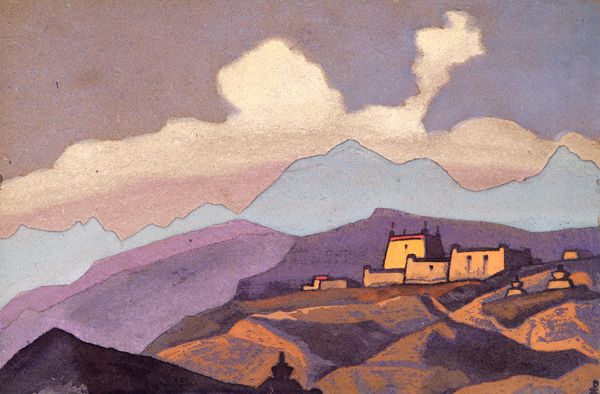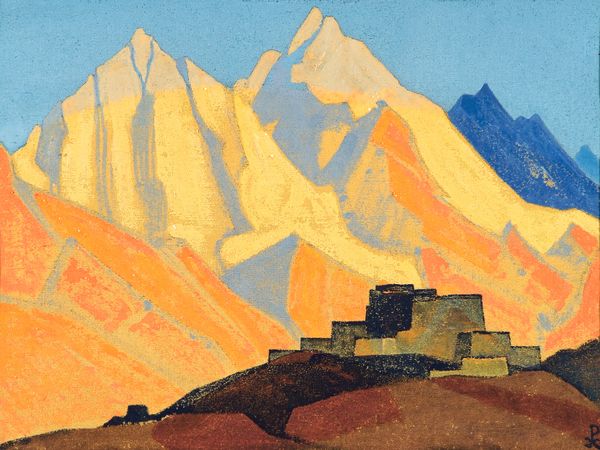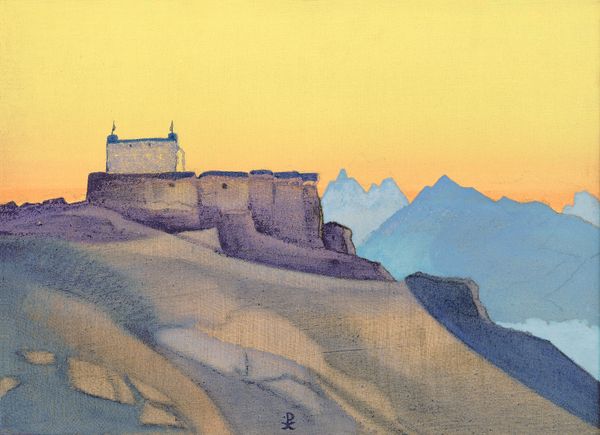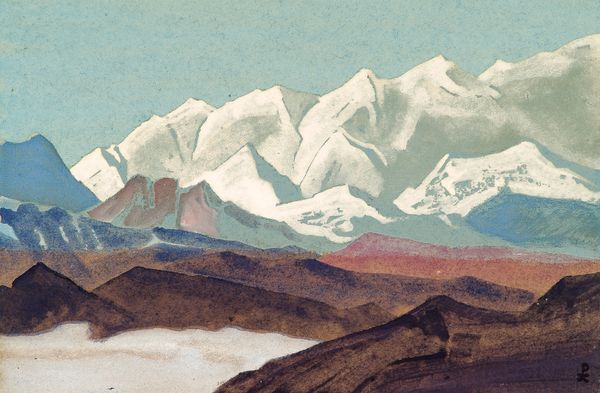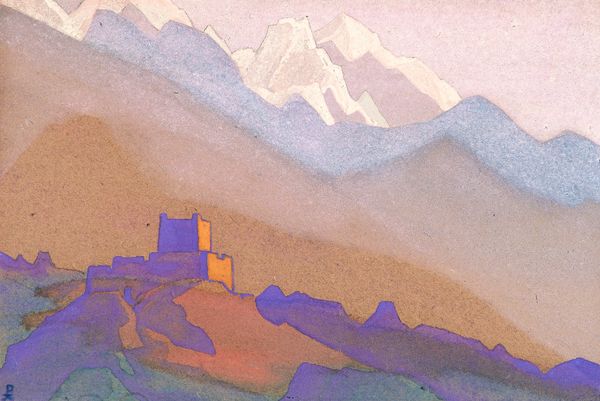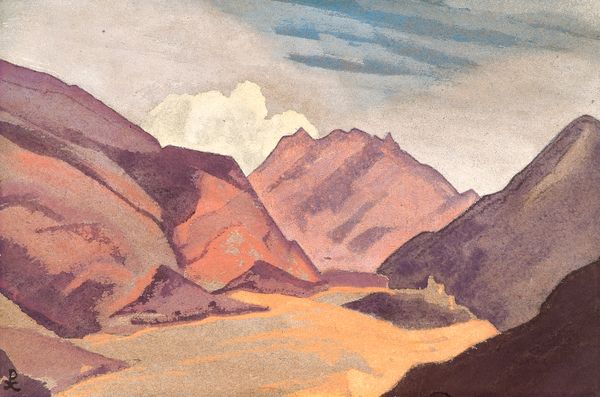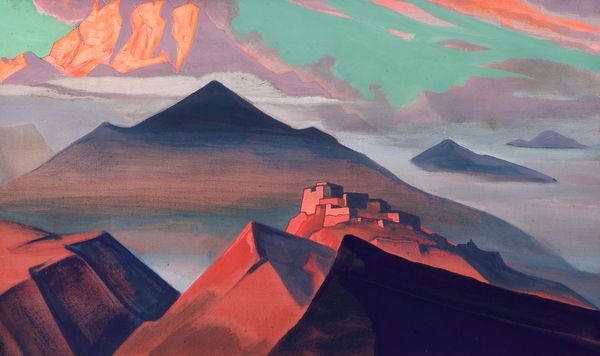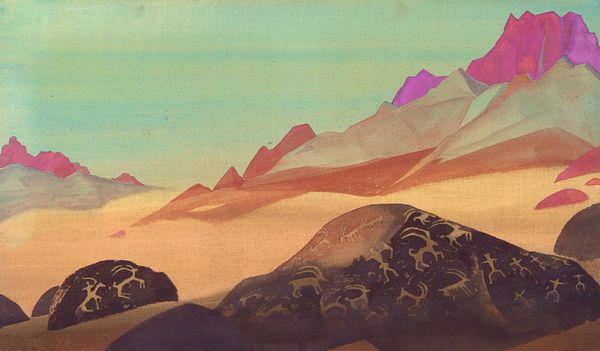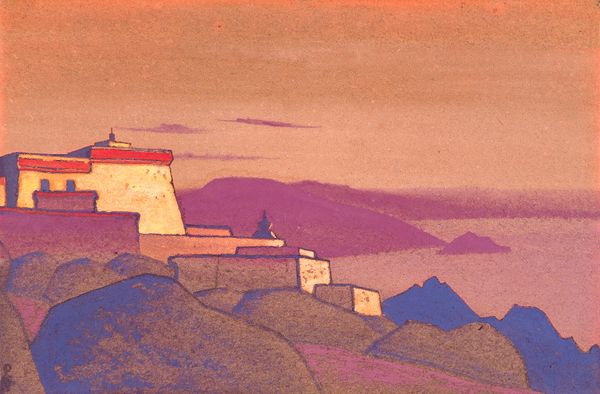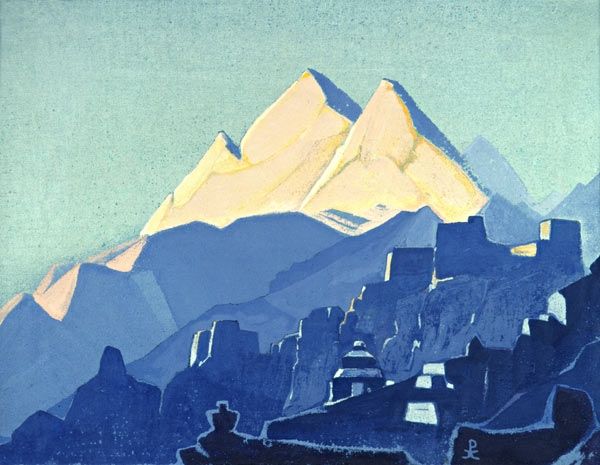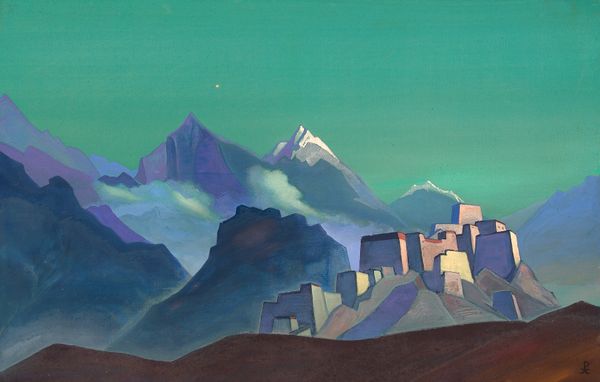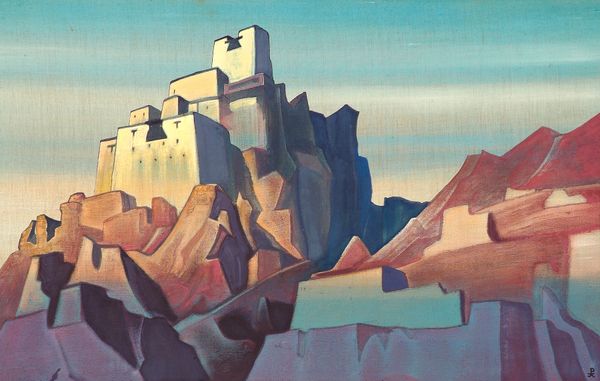
Copyright: Public domain
Curator: This oil painting, "Way to Tibet," was completed in 1925 by Nicholas Roerich and now resides at the Nicholas Roerich Museum. What strikes you initially? Editor: The geometry. The scene's forms are reduced to these crisp, planar shapes, particularly in the architecture, that convey both solidity and a dreamlike remove. And this remarkable limited palette! Curator: Indeed. The muted hues evoke a sense of reverence for the location, don't you think? Roerich's interest in Eastern philosophy and theosophy is evident here; he believed this region held profound spiritual significance. Editor: Definitely. And it is in the symbolic resonance with spiritual themes that these flattened forms acquire a numinous quality. Note also how the high horizon line seems to press down on the architectural and human elements in the foreground. Curator: He's often spoken about evoking emotional states through color; Roerich sought to express inner realities and transcendental states. What might those structures symbolize? Are they representative of a physical place? Editor: Could be. The structures feel like a representation of simplified forms, possibly echoing ancient monasteries or citadels, and acting as symbols for stability and cultural continuity in this stark terrain. There's something self-consciously archaic and idealized in how Roerich depicts architecture here. Curator: Precisely. And the mountains that form the background are icons in themselves; mountains appear to be meeting the sky, hinting at enlightenment and elevated states of consciousness. They visually guide the viewers towards transcendence. Editor: I agree, that repetition amplifies the sense of sublime grandeur, a testament to the enduring strength of the mountainscape and humanity’s aspirations. Roerich understood that perfectly well. Curator: He truly did. The more I consider it, I realize the composition acts as an icon in itself, drawing upon memory, emotion, and culture to enrich its inherent symbolism. Editor: The artist uses landscape, composition, and architecture in such a manner here to provide not a realistic representation of the region but, indeed, its symbolic echo—what could only be captured through the lens of reduction, careful palette choices, and subtle shifts in visual balance.
Comments
No comments
Be the first to comment and join the conversation on the ultimate creative platform.
